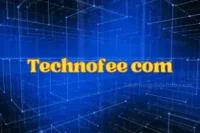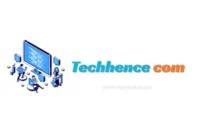How to Protect Digital Course Material from Copying and Reuse
Published: 21/10/2025
In the rapidly growing world of online education, digital course materials have become invaluable assets for educators, institutions, and content creators. However, the ease of sharing and distributing digital content also poses significant risks regarding unauthorized copying and reuse. Protecting your intellectual property is essential not only to safeguard your revenue but also to maintain the integrity and exclusivity of your educational offerings.
This article explores effective strategies and best practices to protect digital course materials from copying and unauthorized reuse, ensuring that your hard work remains secure and your educational business thrives.
Understanding the Risks of Digital Content Theft
Before diving into protection methods, it is crucial to understand the scope and impact of digital content theft in the education sector. According to a 2023 report by the Online Learning Consortium, nearly 35% of online educators have experienced unauthorized sharing or copying of their course materials at some point. This can lead to significant financial losses, diminished brand reputation, and reduced motivation for content creators to innovate.
Unauthorized reuse can dilute the quality of education if altered or incomplete materials circulate freely. This compromises the learning experience and can harm the credibility of the original course provider.
Common Methods of Unauthorized Copying
Digital course materials are vulnerable to various forms of unauthorized copying, including:
- Screen recording and screenshots: Learners or third parties may capture video lectures or slide presentations using screen capture software.
- Downloading and redistributing files: PDFs, audio files, and videos can be downloaded and shared on unauthorized platforms.
- Copy-pasting text and images: Course content can be copied and republished on other websites or platforms without permission.
Recognizing these common threats helps in tailoring protective measures effectively.
Technical Measures to Secure Digital Course Content
Technology offers a wide array of tools and techniques to prevent unauthorized copying and reuse of digital course materials. Implementing a combination of these methods can significantly reduce the risk of content theft.
Digital Rights Management (DRM)
DRM systems control how digital content is accessed, copied, and distributed. By encrypting course materials and restricting access to authorized users only, DRM ensures that content cannot be easily duplicated or shared. Platforms like Adobe Content Server and LockLizard provide DRM solutions tailored for educational content.
While DRM can be effective, it is important to balance security with user experience. Overly restrictive DRM may frustrate legitimate learners, so choosing a flexible system that allows offline access or limited printing can improve satisfaction.
Watermarking and Fingerprinting
Watermarking involves embedding visible or invisible marks into course materials, such as the learner’s name or a unique identifier. This discourages unauthorized sharing because the source of any leaked content can be traced back to the individual responsible.
Fingerprinting is a more advanced technique that embeds unique codes into digital files, allowing content owners to track and identify unauthorized copies online. These methods act as deterrents and provide evidence in case of infringement disputes.
Secure Hosting Platforms
Hosting course materials on secure, dedicated platforms rather than public file-sharing services is crucial. Learning Management Systems (LMS) like Moodle, Canvas, or Teachable offer built-in security features, including access control, user authentication, and activity monitoring.
Restricting downloads, disabling right-click functions, and preventing copy-paste actions within the LMS can further protect content. Although these measures are not foolproof, they raise the barrier against casual copying.
Legal and Contractual Protections
Technical measures alone cannot fully protect digital course materials. Legal frameworks and clear agreements play a vital role in enforcing intellectual property rights and deterring misuse.
Copyright Registration and Notices
Registering your course content with copyright authorities strengthens your legal position in case of infringement. While copyright protection is automatic upon creation, registration provides formal proof and enables you to claim statutory damages.
Including clear copyright notices on all course materials reminds users of your ownership and the legal implications of unauthorized use.
Terms of Use and Licensing Agreements
Establishing comprehensive terms of use and licensing agreements is essential. These documents should specify how learners can use the content, restrictions on sharing or reproduction, and consequences of violations.
For example, a typical licensing agreement might allow learners to access materials for personal use only, explicitly prohibiting redistribution or commercial reuse. Including clauses about penalties and dispute resolution can deter infringement and provide a clear course of action if violations occur.
Enforcement and Takedown Procedures
Monitoring the internet for unauthorized copies of your course materials is important for timely enforcement. Tools like Google Alerts or specialized content monitoring services can help identify infringements.
If unauthorized content is found, issuing takedown notices under the Digital Millennium Copyright Act (DMCA) or similar laws can compel hosting platforms to remove infringing content. Maintaining a clear enforcement strategy demonstrates your commitment to protecting your intellectual property.
Best Practices for Educators and Course Creators
Beyond technical and legal protections, adopting best practices in course design and delivery can help reduce the risk of unauthorized copying and reuse.
Engage Learners with Interactive Content
Interactive elements such as quizzes, assignments, and live sessions encourage active participation and make it harder for learners to simply copy content without engaging. This approach not only enhances learning outcomes but also reduces the appeal of unauthorized sharing.
Regularly Update Course Materials
Frequently updating your course content keeps it fresh and relevant, making older unauthorized copies less valuable. Updates can include new research, case studies, or multimedia elements, which also demonstrate your ongoing commitment to quality education.
Build a Community and Foster Trust
Creating a community around your course—through forums, social media groups, or live Q&A sessions—builds loyalty and discourages learners from sharing materials outside the authorized environment. When students feel connected and valued, they are more likely to respect your intellectual property.
Conclusion
Protecting digital course materials from copying and reuse is a multifaceted challenge that requires a combination of technical, legal, and pedagogical strategies. By understanding the risks, implementing robust security measures, and fostering a respectful learning community, educators and content creators can safeguard their intellectual property while delivering high-quality educational experiences.
As online education continues to expand, staying informed about emerging threats and evolving protection technologies will remain essential. Prioritizing content security not only preserves revenue but also upholds the integrity and value of digital learning.

- Be Respectful
- Stay Relevant
- Stay Positive
- True Feedback
- Encourage Discussion
- Avoid Spamming
- No Fake News
- Don't Copy-Paste
- No Personal Attacks

- Be Respectful
- Stay Relevant
- Stay Positive
- True Feedback
- Encourage Discussion
- Avoid Spamming
- No Fake News
- Don't Copy-Paste
- No Personal Attacks





